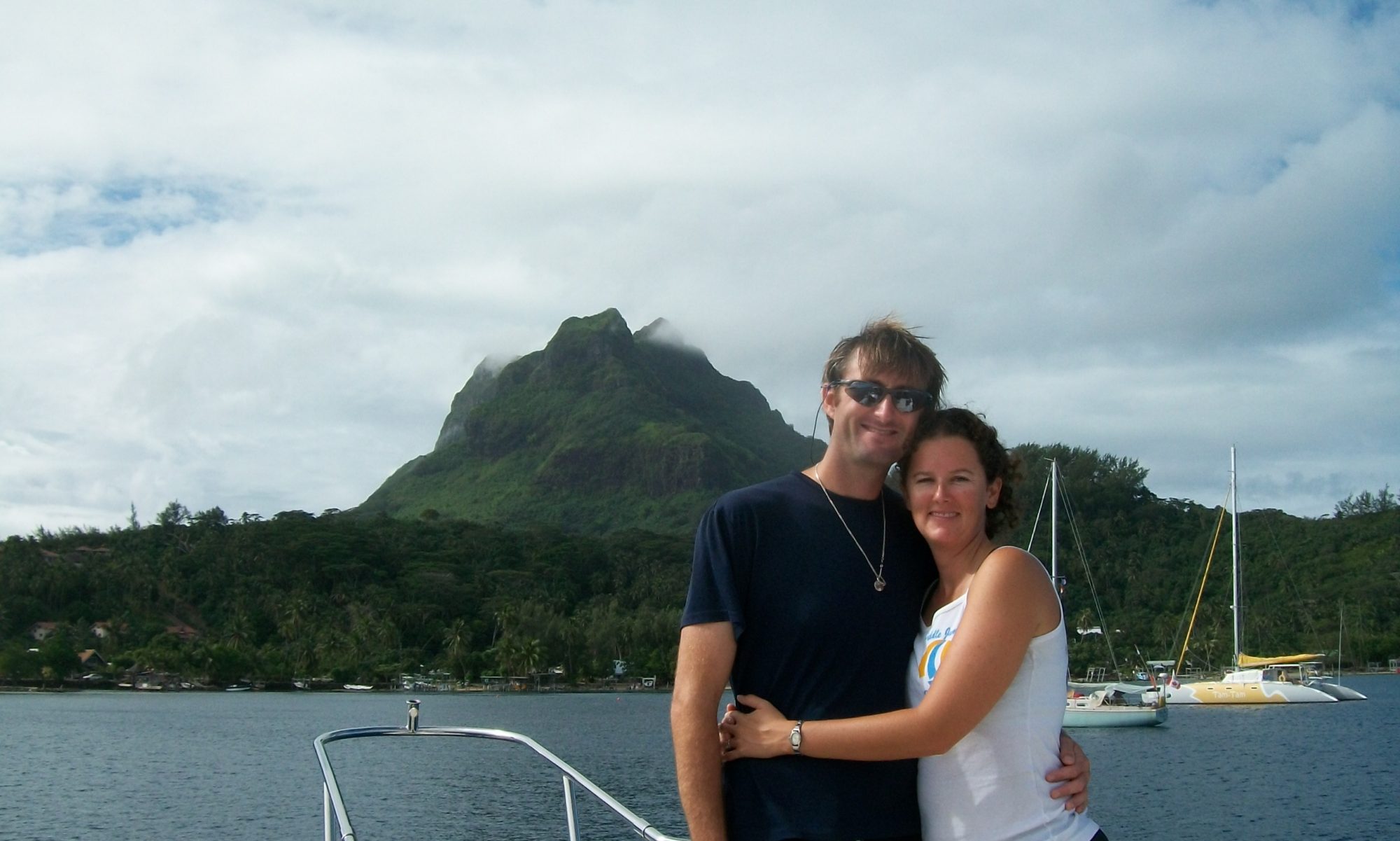And the winners of their own special copies of Sharktopus on DVD are…
Mike Berndt with this comment
and
Michael Lockridge with this comment!
Congratulations guys, we’ll be shipping it out to you shortly and awaiting your reviews 😉
You can still buy Sharktopus on Amazon!
What’s with the obsession with Sharktopi? Guess who’s in it!
——————————–
Tikehau, Tuamotu, French Polynesia

We prepare to leave this little island paradise and head for the Society Islands with a little hesitation. Not only is Papeete, Tahiti the capital and ONLY major city in this “colony” the size of Europe and consisting of a conglomeration of over 100 islands it is also a known location. Translation: Tourist town and more importantly, normal tourists. Unlike us. We’re different.
No, seriously, we are. The nature of cruising on a sailboat makes us a significantly different “type” of tourist than the typical one. For example, we live on our boat so we don’t worry about living in a hotel. Which means we don’t have to make every day worth the daily hotel rate. It actually relieves a great deal of stress from the traveling equation. Instead of telling you about tourist attractions for gringos in Mexico, I can actually tell you what it means to really live in La Cruz de Huanacaxtle for over a month. I can tell you about a city that when we arrived there, most of the tourists were actually other Mexicans!
We don’t have a flight home to catch and that alleviates the rush of most travelers. Met a new friend and want to stay an extra few days to have them over for dinner? Heck, why not? We even have a “home” to invite them to! Fall in love with a place and don’t want to leave yet? Sure, we can tack on a few days. The main concern we have is the expiration of our tourist visas.

Also, since leaving Mexico we have pretty much been in places where the locals outnumber the tourists. If you have never been a tourist in a non-tourism location let us tell you, it makes a HUGE difference in the way people treat you and your overall experience. We actually got to meet real Polynesians, not just the smiling people at the fancy hotel and we found out how genuinely friendly most of them are. Also, because there were so few travelers in their towns, we were a novelty to the local people instead of a constant nuisance or just a source of income.
We are exaggerating to a small degree because we are subject to the movements of our ship & the desires of our captain & co-captain (when airline pilots run ships they have funny names for things…) but that really doesn’t interfere as most of us are ready to move on each time that we do.
We also experienced lots of other “non-tourist” things, like grocery shopping in a foreign language, and buying spare parts. Fortunately for us, in both Mexico and French Polynesia we had the use of specialized-for-traveling-sailors Spanish and French dictionaries, for things like the port side of the boat and the head gasket of your engine. Try to explain those with a basic high school or even university level language class!
We’re not saying that we are somehow “better” than the typical tourist; just that what we are looking for and our overall experiences are vastly different. We also put up with more headaches. Like a lack of air conditioning, slow travel and small living conditions. Our movements are restricted by weather windows and if our boat breaks or we lose something overboard we can’t just call someone like for a rental car; we have to deal with it. (There are no boat yards and shipping parts out here is not cheap.)
We also don’t get the benefits of personal service, which means we mostly do our own dishes. Oh yes, and we are sailing a 44 foot boat though the middle of the ocean hundreds of miles from any form of rescue…but to us that’s kind of awesome 😉
We prefer this style of travel. It’s cheaper, more self-reliant and you get to see what we think are the “cool” stuff. You get to connect with people…and get your butt handed to you in ping-pong.
Tahiti will be interesting as we will become tourists in a tourist town for the first time in several months.

Would you be willing to take on a few discomforts and a couple of manageable risks in order to sail the world?
00
Like this:
Like Loading...
















